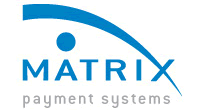November 12, 2006
The skinny on chargebacks and disputes - Part III
| By Ross Federgreen
Contracts today often contain the 1-3-7 rule. This means over a given period - usually one month - the percentage of chargebacks cannot exceed 1%; the percentage of disputes cannot exceed 3%; and the percentage of credits cannot exceed 7% of a merchant's total transactions during that period. Visa U.S.A. guidelines recommend that merchants continually monitor and track these and other ratios. Specifically, Visa suggests taking the following steps in monitoring chargebacks: 1) Track chargebacks and re-presentments by reason code; 2) include initial chargeback amounts and net chargebacks after re-presentment; and 3) track card-present and card-not-present chargebacks separately. The orderly approach The key to helping merchants successfully respond to chargeback notices is organization. Strongly encourage merchants to treat each notification seriously. As we discussed in the first part of this series, each response is driven by a specific time element. In addition, for each chargeback, merchants should know the jurisdiction responsible for the notification, the specific dispute code, the specific issuance bank and the specific request being made. Here are 15 steps to take when looking at a chargeback notification:
Merchants should keep data organized so they can discern patterns and trends. The point is to reduce future chargebacks and disputes by analyzing the information to recognize emerging patterns. Issues that might surface include problems with fulfillment, problems with issued credits, customer service difficulties and a multitude of other concerns, including the possibility of fraud. The analytical angle Trend analysis is critical. It provides merchants a view of not only a single chargeback in isolation but also, more importantly, an overview of the status of merchants' specific operations. Frequently updating trend information with the knowledge of specific circumstances, such as seasonal variations, will provide merchants with a growing platform of reference data. At the very minimum, merchants should track and understand the implications of the following on a monthly basis:
Why bother with trend analysis? By establishing baselines of behavior you can more readily recognize aberrations. It's far better to take action related to a predicted increase in chargebacks than react to a situation identified by an outside source. Many merchants will ask you if there are resources that will provide these services. The short answer is yes. But you, as the ISO or merchant level salesperson, must be well informed about the quality of the provider. The diligent defense Do not rely entirely on information provided by a given merchant's processor/acquirer. The information these entities provide doesn't account for the critical needs of a successful chargeback defense. The issuance bank is focused on accounting for the specific dispute or chargeback code or identifying specific credit cards that have been used to defraud the merchant in question. A number of innovative programs have been developed in recent years that attempt to help merchants respond appropriately to chargebacks. Crucial to success is the development of custom responses, which are tied to three variable factors: the specific dispute code, the issuance bank and the specific elements the merchant can use when responding to the chargeback. For example, it does no good to develop a response that requires merchants to use proof of delivery in the MO/TO or e-commerce space if they, for whatever reason, cannot do so. However, it's always important to provide this type of information so the most-informed business decisions can be made. The reliable response Merchants ask many questions about chargeback and dispute regulation. The primary concern is consequences: What happens if they fail to respond or do not respond in a timely manner? The simple answer is that all merchants should be taught to respond to all requests. Failure to respond is not prudent, except in cases in which the merchant accepts the account adjustment given in the chargeback notification. Many merchants ask if there is a criminal component to a chargeback. Chargebacks are not, in themselves, evidence of criminal activity. However, patterns of chargebacks can lead to criminal prosecution after an investigation. Reasons include evidence of the following: intentional failure to deliver product, delivery of banned items, intentional failure to issue refunds or other illegal activity. The rules that govern chargebacks are set and governed by the card Associations. Through their corporate governance, new rules can be set or existing rules and regulations can be modified. This process is normally driven by the evolution of payment modalities due to the development and modification of platforms. The arguable advantage As an ISO or MLS, it behooves you to be knowledgeable about the chargeback process and its governing rules and regulations. You can enjoy a very significant competitive advantage if you offer your merchant base meaningful and knowledgeable assistance in this area. A word of caution: Do not offer advice if you are not familiar with the subject. Help your merchants obtain qualified help instead. Remember, if your merchants cannot get paid, they cannot survive. |


 hen a company receives a chargeback or a dispute, a record of this event is maintained within the payment system. Many merchants do not realize the ratio of disputes and credits is also monitored.
hen a company receives a chargeback or a dispute, a record of this event is maintained within the payment system. Many merchants do not realize the ratio of disputes and credits is also monitored.